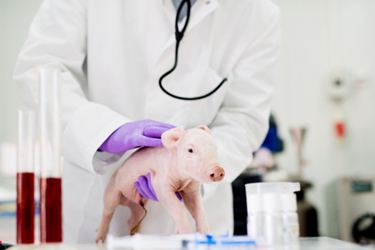The Sinclair Nanopig™—The Other Non-Rodent
By Scott E Boley,Yafei Chen, Derek Brocksmith, and Guy Bouchard

The minipig has long been an underused non-rodent species for nonclinical safety assessments, despite its advantages. Known for having skin that closely resembles human skin, the minipig has been used extensively in wound healing and dermal studies for years. It is an accepted species by regulatory agencies for safety assessments and is emerging as a strong alternative to non-human primates (NHPs) and dogs, whose use in safety studies has raised growing ethical concerns. The minipig is an excellent non-rodent choice for drug development, particularly for both small molecules and biologics.
For small molecules, the focus often lies on metabolism. Genomic and proteomic analyses of the Sinclair Nanopig™ (Nanopig™) have revealed that it shares significant similarities with humans in terms of metabolism, with 47 identified CYP450 genes—20 of which are in the CYP 1/2/3 families, comparable to the 57 CYP450 genes and 24 in the CYP 1/2/3 families in humans. When assessing CYP450 activity, the Nanopig™ shows closer similarities to humans than dogs, especially for CYP2C and CYP3A, enzymes responsible for metabolizing over half of marketed clinical drugs.
In biologics, research has shown that human IgG binds to the Fc receptor (FcR) in minipigs, and the minipig expresses orthologs for key targets like chemokines, cytokines, and growth factors—common targets for biologics in development (Egli et al., 2019). A review of the literature indicates that many biologic programs submitted to regulatory bodies included both rodents and non-rodents (Primarily rats), suggesting that the pharmacological relevance of rodents in such programs implies similar relevance for minipigs. These findings collectively support the inclusion of the minipig in early screening efforts for selecting species in safety assessments, offering a valuable alternative to more traditionally used animal models.
Get unlimited access to:
Enter your credentials below to log in. Not yet a member of Drug Discovery Online? Subscribe today.
